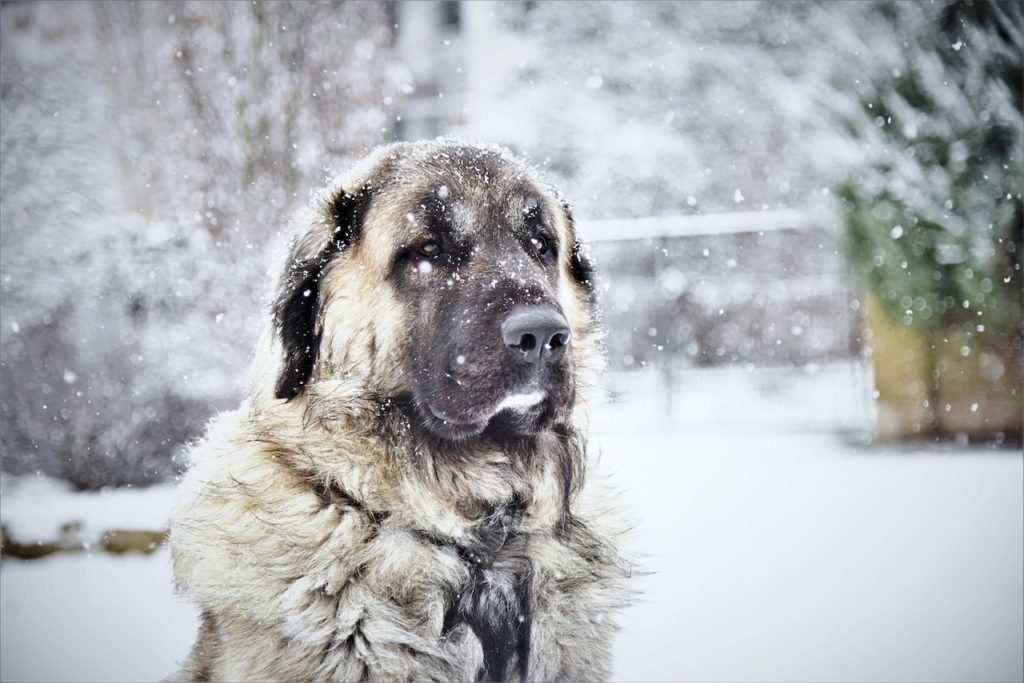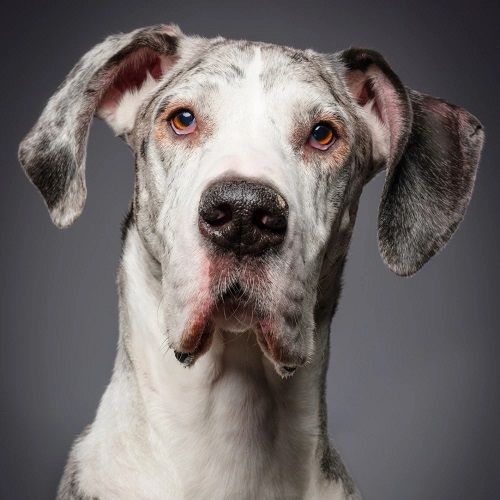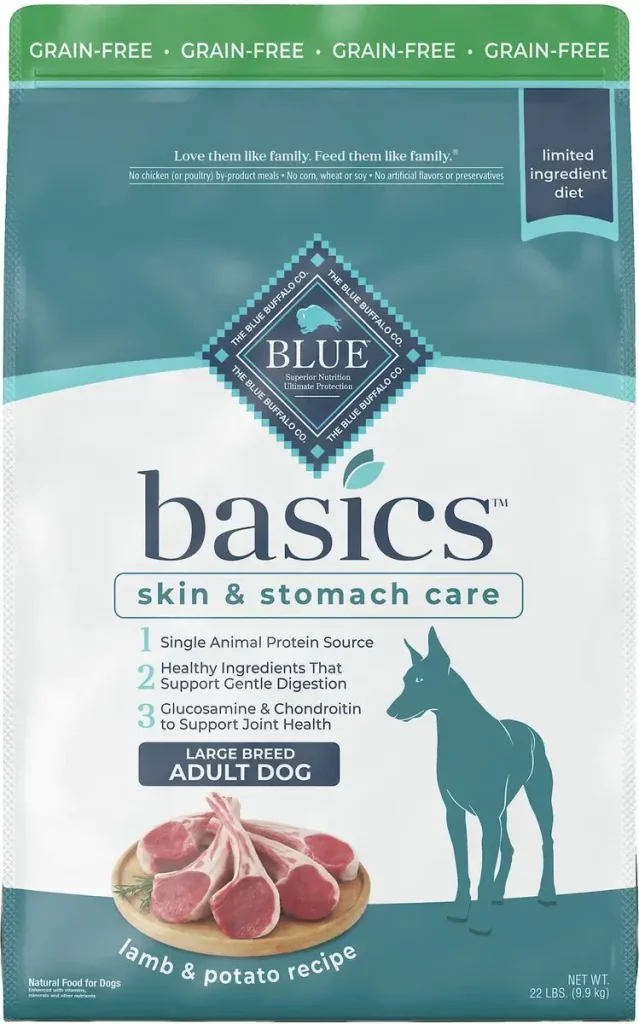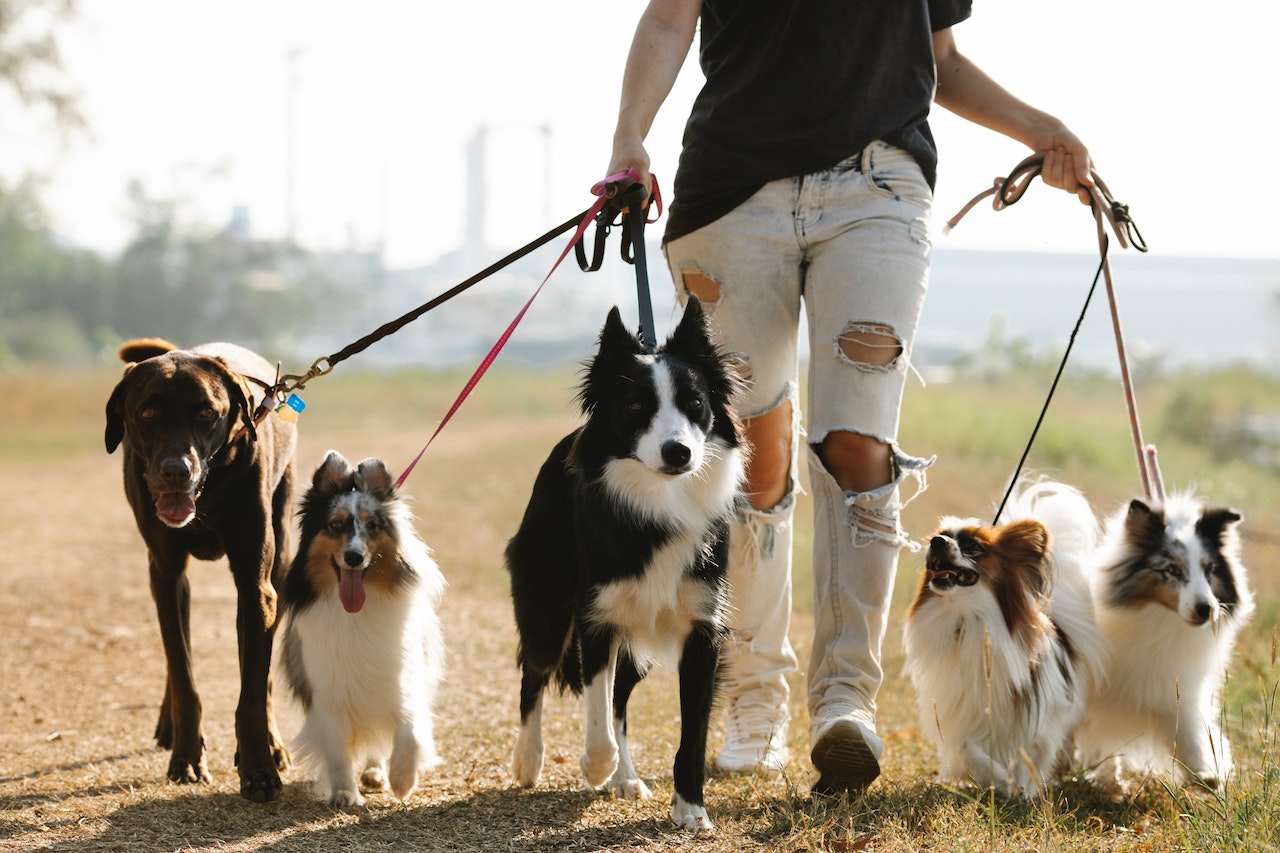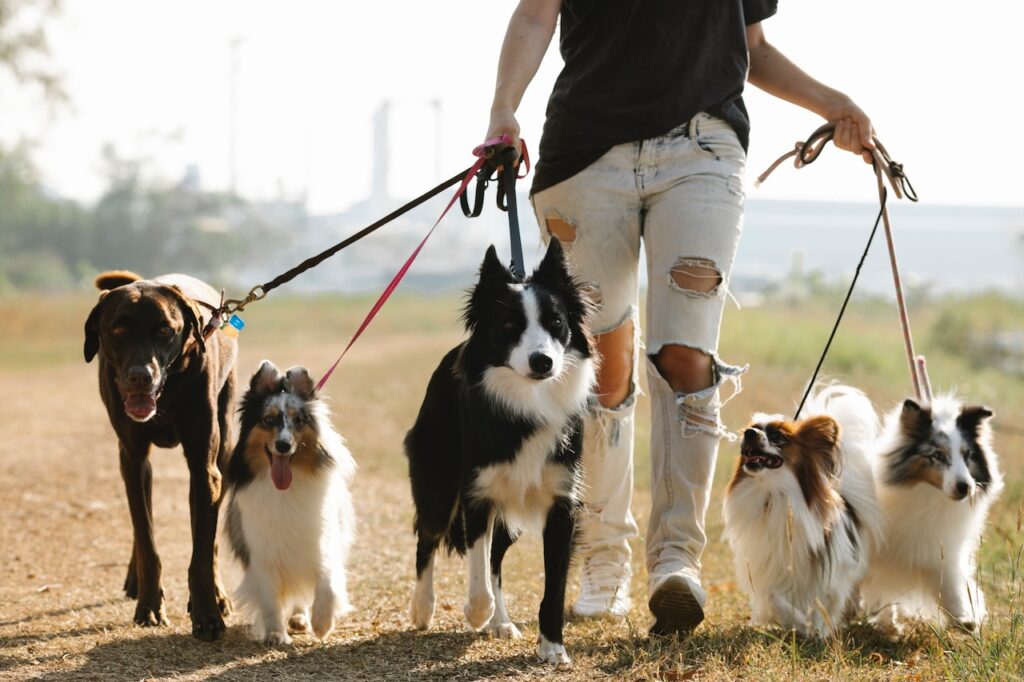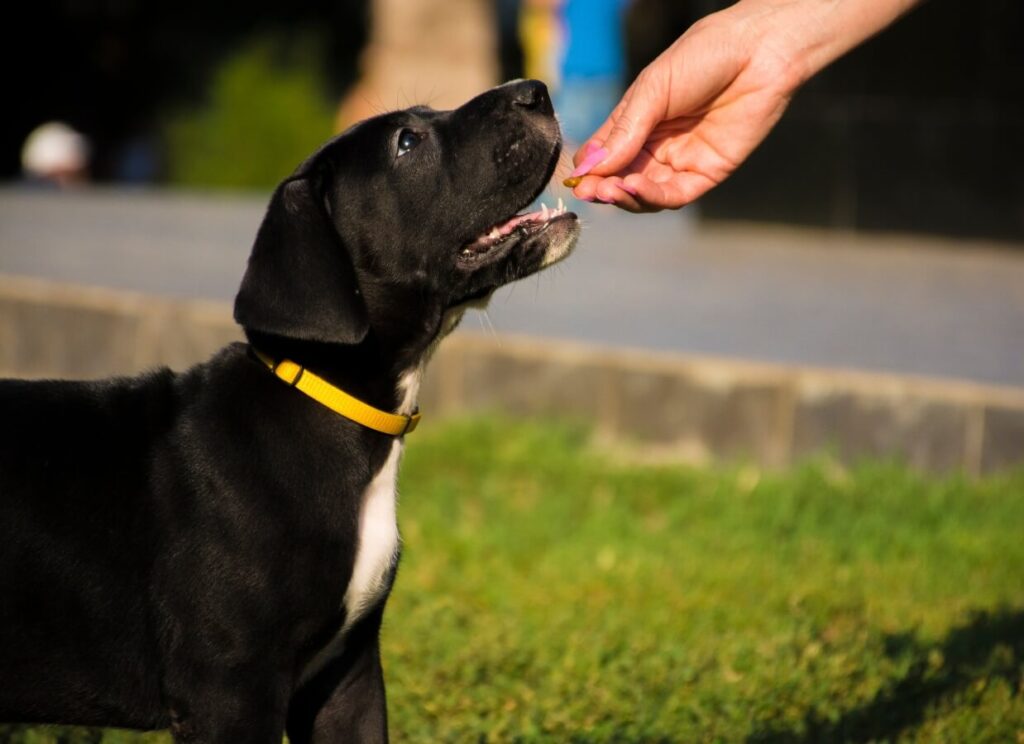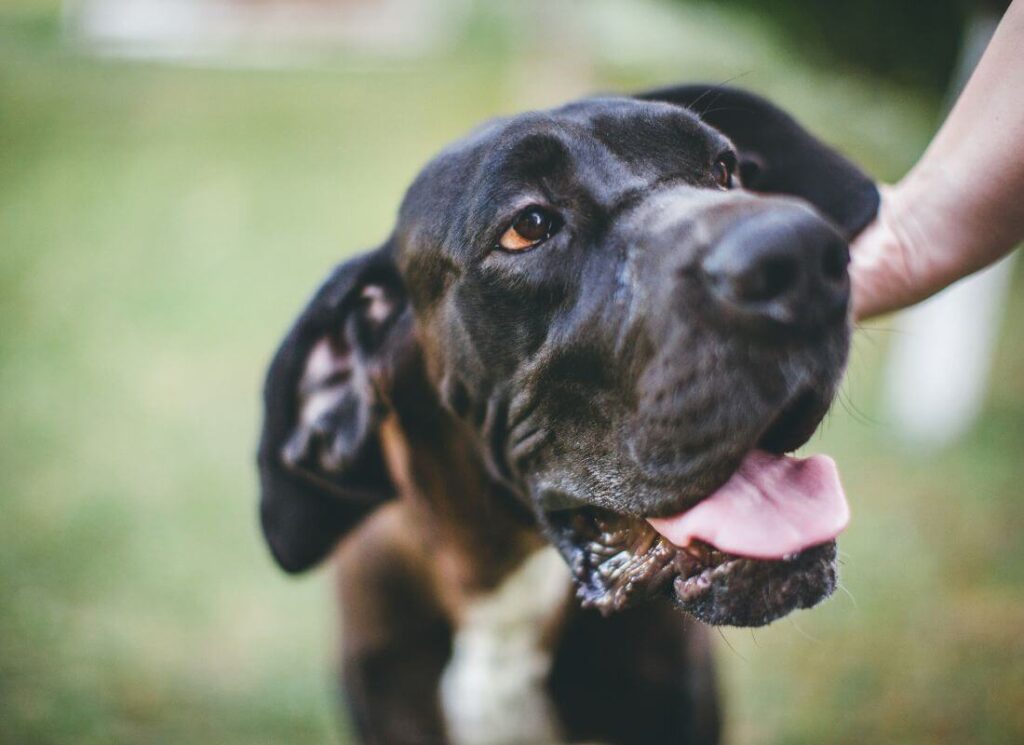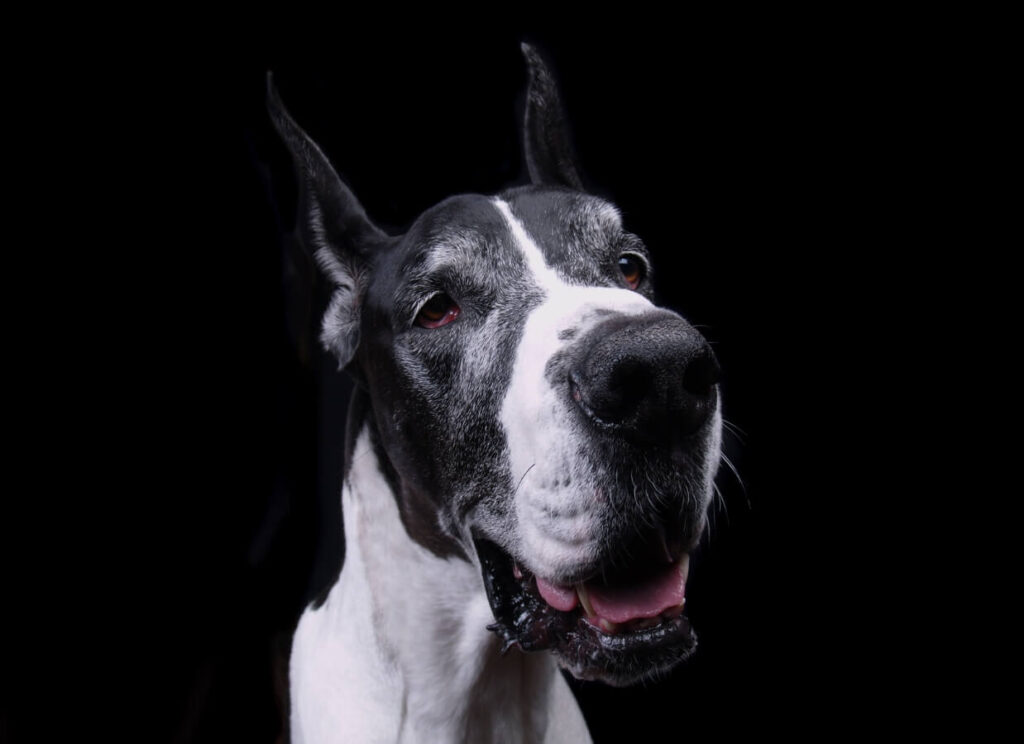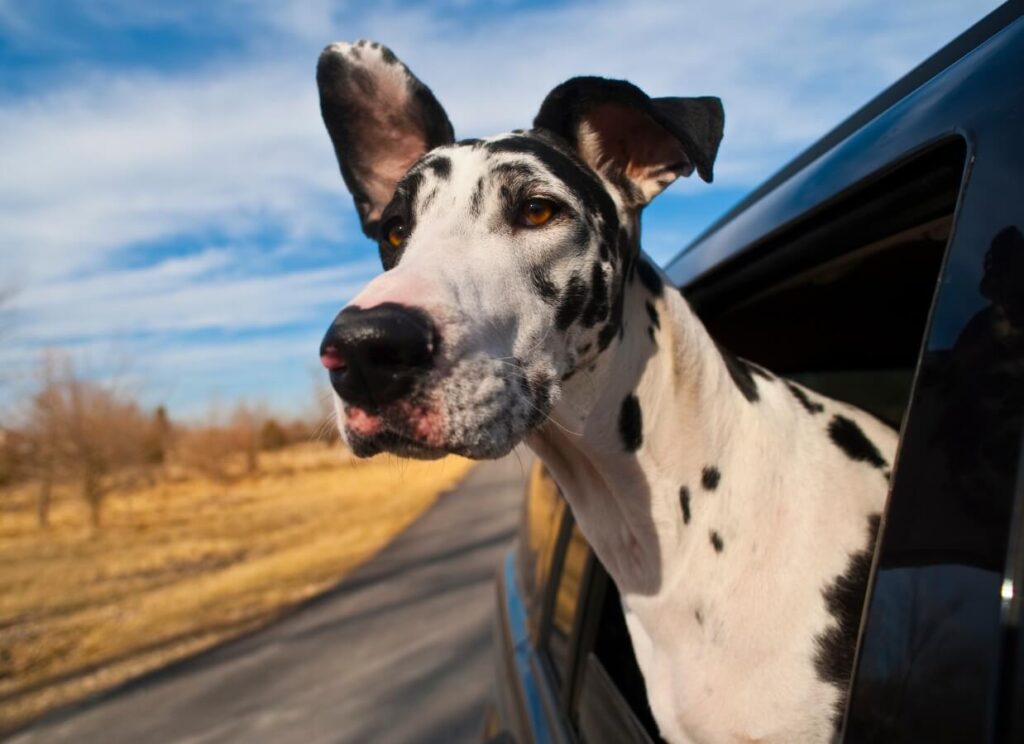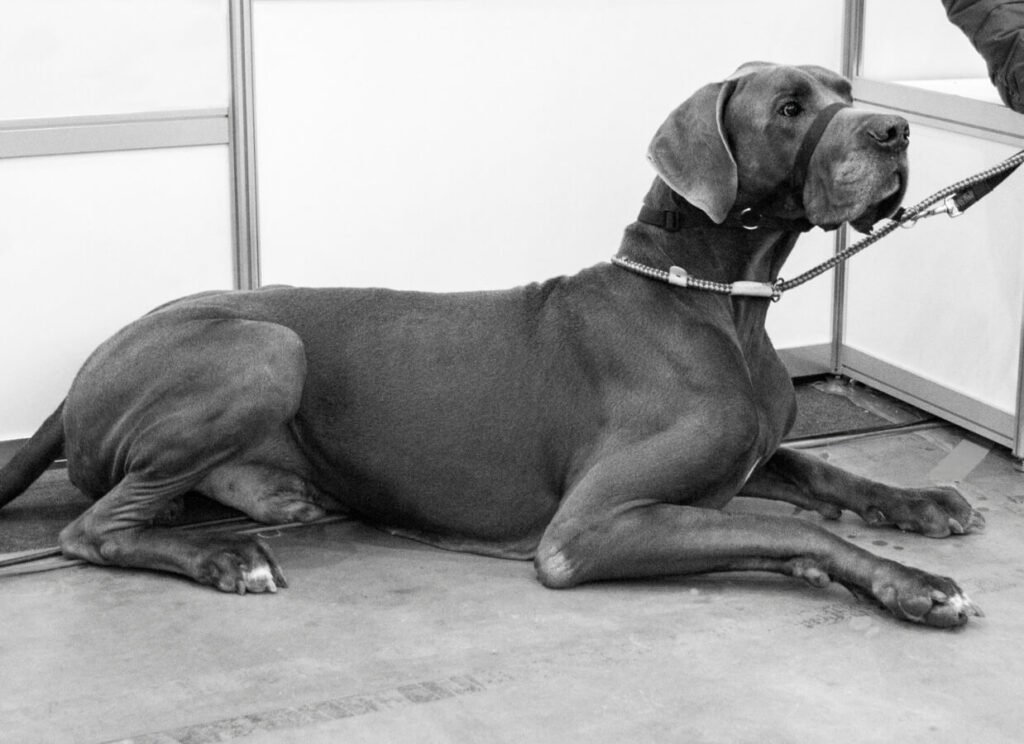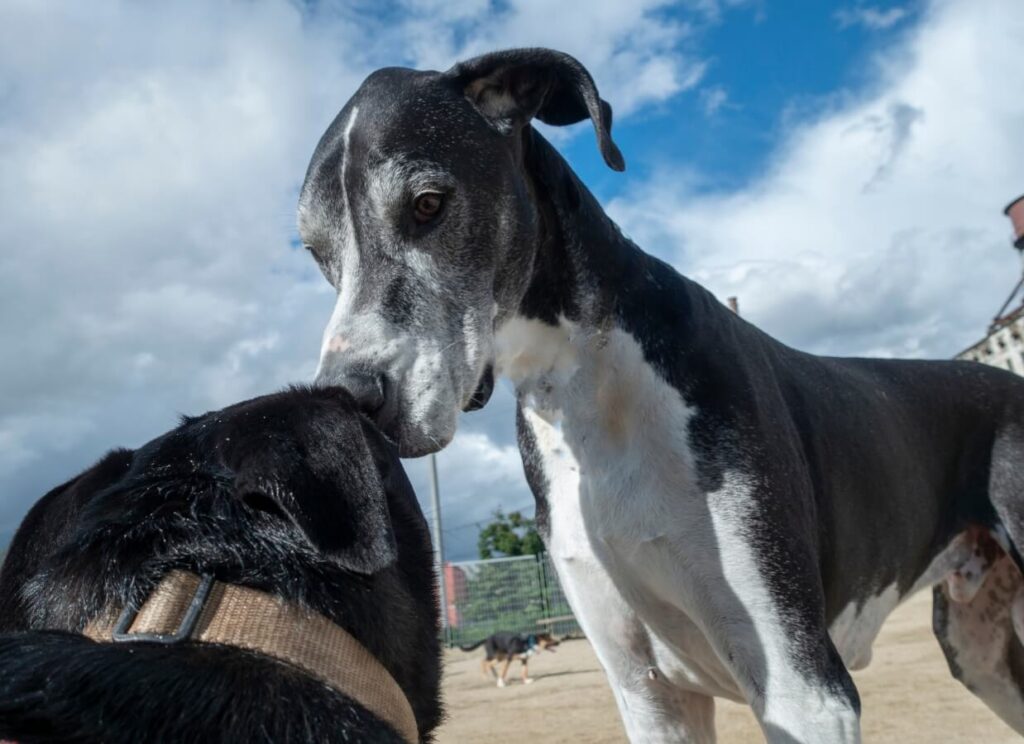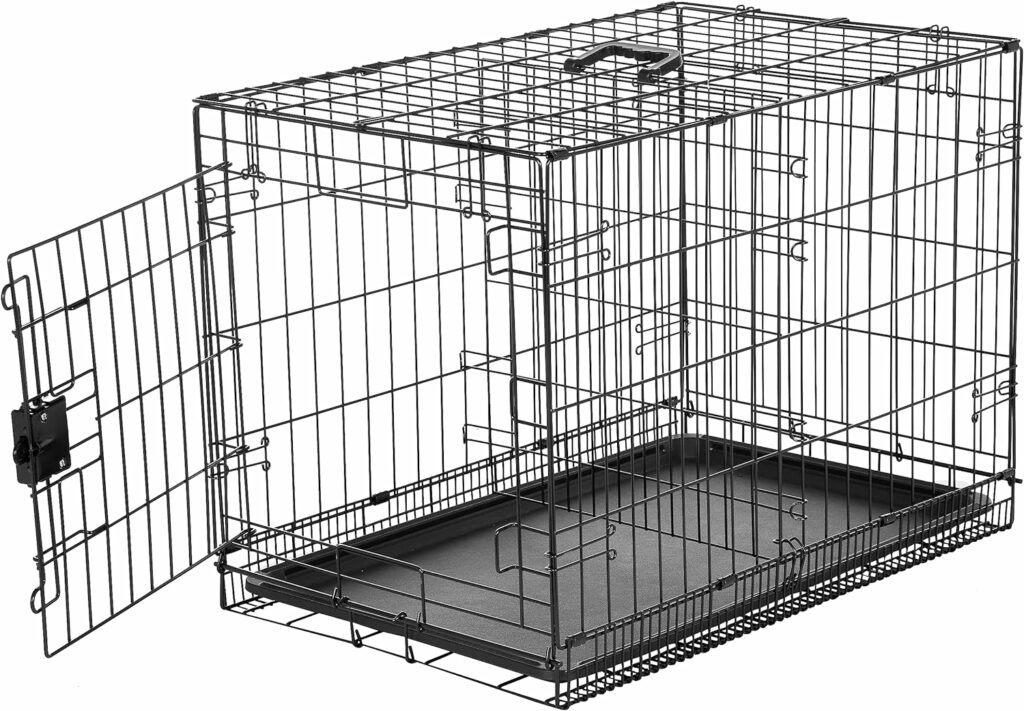The pet community has jumped head-first into yet another social-media-fueled panic about certain pet food brands. Once again, misinformation is spreading, rampantly! The now-closed Hill’s Science Diet Recall 1 for Vitamin D has been brought up by concerned pet parents and influencers as “proof” of a bigger problem, and I wanted more information.
A Facebook group, led by a pet owner who claims to have been the lead plaintiff in (and “won”) the lawsuit against Hill’s Science Diet, utilizes its platform to advocate for raw and “natural” diets for pets.
The group actively discourages members from trusting veterinarians and feeding kibble, likening it to “playing Russian Roulette with your pet“. They openly criticize brands like Hill’s, Purina, and Royal Canin, alleging they contain fillers and toxins that primarily serve the companies’ financial interests.
That was a mouthful, but it’s important in the context of this story.
This blog post aims to provide a comprehensive overview of Hill’s vitamin D recall, including the reasons behind the recall and why it may have been blown out of proportion.
- Hill’s Science Diet Recall information
- The Hill’s Class Action Lawsuit for Vitamin D (and how it was resolved)
- How many pets were harmed by Hill’s Science Diet
- How many pets died because of Hill’s Vitamin D Recall
- Pet food manufacturing quality control

Background on Hill’s Pet Nutrition
Hill’s Pet Nutrition is a well-established brand known for producing premium pet foods, including heavily researched therapeutic “prescription” diets recommended by veterinarians for various health conditions. With an average 2023 revenue of over $4 Billion U.S.D., they are a major player in the pet food market.
The company invests significantly in state-of-the-art research facilities. It employs a team of veterinarians, veterinary nutritionists, and scientists dedicated to advancing the understanding of pet health and nutrition.
One of Hill’s most notable research facilities is the Hill’s Pet Nutrition Center in Topeka, Kansas.
This cutting-edge facility spans over 80 acres and is equipped with laboratories and top-of-the-line animal housing areas where humane controlled feeding studies are conducted.
Few brands meet this commitment to research and the advancement of nutrition.
While it does elevate them above many other pet food brands, this doesn’t make Hill’s Science Diet exempt from mistakes.

The Hill’s Science Diet Recall for Vitamin D
In January 2019, Hill’s Pet Nutrition received a complaint about possible Vitamin D toxicity in a dog that had eaten Hill’s canned dog food.
Hill’s Science Diet investigated and then quickly alerted the FDA that they were issuing a voluntary recall of select canned dog foods due to elevated levels of vitamin D.
A recall was issued on January 31st, 2019.
“Following that recall, we conducted a detailed review of all canned dog foods potentially impacted by the vitamin premix with elevated levels of vitamin D. This review included: analyzing consumer complaints; reviewing veterinarian medical consultations; auditing our supplier; and reviewing our own manufacturing and quality procedures. We then did additional product testing to ensure we had taken all appropriate action.“
Hill’s Science Diet Press Release
Hill’s indicates in their press release that a “limited number of complaints” came in. Not thousands.
Elevated levels of vitamin D2 can lead to potential health issues in pets, including symptoms such as vomiting, loss of appetite, increased thirst, increased urination, excessive drooling, and weight loss. In some cases, it can lead to death.
A pet’s size and overall health affect its capacity to metabolize excessive amounts of Vitamin D.
Following the initial recall, the FDA requested that Hill’s Science Diet conduct testing on their retention samples. Retention samples refer to portions of each production lot that are retained at the testing facility in the event of any potential issues arising.
“Testing leading up to the January recall and the March and May recall expansions found that samples of the dog food contained excessive, potentially toxic amounts of vitamin D.”
U.S. Food & Drug Administration (FDA)
Of course, this is a scenario that should never happen, however, it did. There is no disputing that Hill’s Science Diet distributed contaminated food and that some dogs were made sick by it.
I’ll dig into that more, below.

Hill’s Science Diet Recall Timeline
Here is a timeline of events related to the vitamin D recall:
January 2019 – Hill’s Science Diet Received a report of a pet sick with possible Vitamin D toxicity
January 30th, 2019 – DSM Nutritional Products, the supplier of the vitamin pre-mix used in Hill’s Science Diet, issued a recall for the ingredient3. A single employee had included an extra drum of Vitamin D, instead of Vitamin E, into the mix.
January 31st, 2019 – Hill’s Pet Nutrition Voluntarily Recalls Select Canned Dog Food4 for Excessive Vitamin D.
February 1st, 2019 – The FDA started inspections of the pet food manufacturing facility.
February 2019 – A media frenzy ensued, with countless pet owners anecdotally reporting on social media that their pet had been sick from eating Hill’s Science Diet of all kinds (including kibble) up to a year prior. (This is reminiscent of the questionable 2023-2024 “Purina Panic”).
Many of these reports lacked solid evidence, as pet owners attributed various ailments without providing full context.
February 11th, 2019 – One lawsuit of many, Bone et. al. v. Hill’s Pet Nutrition Inc. et. al.5 1:19-cv-00831 is filed. The text of the lawsuit indicates a belief that “As a result of online consumer complaints, Hill’s thus knew or should have known of the elevated vitamin D levels in the Specialty Dog Foods by at least February of 2018.”
The lawsuit alleges that Hill’s Science Diet knowingly sold toxic food for an extended period, including dry pet foods that were not part of the recall. The plaintiffs claim their evidence for this assertion stems from anecdotal consumer reports observed on social media.
February 11th, 2019 – The FDA tested two samples of Hills Prescription Diet Digestive Care i/d Low Fat (SKU Number 10423). The results showed:
Lot code T1911124 3912 had: 100,170 to 107,282 IU/kg of vitamin D
Lot code T1911125 3912, had 102,829 to 102,346 IU/kg of vitamin D
Scientific literature suggests that concentrations exceeding 4,000 IU/kg of dry matter can induce symptoms, with higher levels correlating with more severe health problems and the potential for death.
There is no question that some pets were harmed by this.
March 20, 2019 – The recall is expanded to include additional formulas, following the testing of retention samples. Some of those formulas had not yet been distributed, and thus, posed no harm to pets.
Hill’s Science Diet states that they have “received a limited number of complaints of pet illness related to some of these products.”
May 17, 2019 – An additional lot code is added to the recall list when it was discovered to have been left off the March recall in error.
All told, one source I found indicated that 86 total lots of 33 varieties of Hill’s Canned Pet Foods were recalled.
That’s 675,000 cases—or 13.5 million cans
November 2019 – A warning letter from the FDA nailed Hill’s Science Diet for failing to follow Hazard and Risk-Analysis prevention.
“During our inspection of your facility, FDA Investigators noted violations of the Hazard Analysis and Risk- Based Preventive Controls requirements for animal food found in Title 21 of the Code of Federal Regulations, part 507, subpart C (21 CFR part 507, subpart C).“
FDA Warning Letter to Hill’s Science Diet, November, 20196
Some, but not all of the foods were part of the “prescription” line. No dry food or treats were affected.
The Hill’s Vitamin D Recall was terminated on 12/21/2021, indicating that the company had responded satisfactorily and that there was no more threat to pet health.
Hill’s Science Diet made some major errors leading up to the recall.

How Did Hill’s Science Diet End Up With Too Much Vitamin D?
The manufacturing process involves the addition of specific vitamins and minerals to ensure the nutritional balance of the pet food.
The elevated levels of vitamin D in Hill’s Science Diet products during the recall were attributed to a supplier error in the vitamin pre-mix that was used. 7
A pre-mix should contain the correct levels of each nutrient, however, in this case, something was wrong.
An Employee at DSM Nutrition Products, the maker of the vitamin package used by Hill’s Science Diet pet food, had supposedly poured a drum of Vitamin D, instead of Vitamin E, into the batch of pre-mix.
Veterinary Information Network8
How Hill’s Science Diet specifically missed the elevated vitamin in numerous lots remains to be understood. Understandably, this has caused many pet parents and veterinarians to lose trust in the company.
Regrettably, pet owners are left to speculate, and the speculations propagated by influencers and bloggers in this field have led to significant levels of panic, fear, and misinformation regarding the topic.
Hill’s Science Diet asserts that they have revised their criteria for third-party ingredient suppliers and have enforced more rigorous testing and safety standards internally. The issue should never have happened and Hill’s Science Diet deserves some fallout from the veterinary and pet community.
As with many things like this, however, there is no proof of an ongoing, or widespread issue involving “thousands of deaths”.

How Many Pets Were Harmed by the Hill’s Vitamin D Recall?
The exact number of pets affected by the Hill’s Vitamin D recall is challenging to ascertain.
While Hill’s initially reported receiving complaints related to approximately 0.1% of their product volume, the actual number of pets harmed remains uncertain.
Pet owners across various regions reported instances of illness and, tragically, some deaths potentially linked to elevated Vitamin D levels in Hill’s pet food. Many claim, online, to have experienced harm up to a year before the recall. Certain people outright blamed any foods in Hill’s product line, including cat food and kibbles that were not part of the recall.
However, without comprehensive reporting mechanisms or centralized data collection, determining the precise extent of harm inflicted on pets is difficult.
There is no published proof that excessive levels of Vitamin D harmed or killed “thousands of pets” as is commonly reported.
Hill’s Science Diet addressed complaints and, upon receiving evidence from pet owners such as purchase receipts and veterinary records, willingly covered veterinary expenses related to any verifiable illnesses attributed to their products.
Several unverifiable online reports assert that certain individuals were “offered only $5 or $10 coupons as compensation for their pet’s demise.” It is reasonable to surmise that these individuals may have lacked evidence substantiating their assertion that Hill’s food was responsible for their pet’s health issues.
In simpler terms, there is a possibility that they attributed the issues to food not included in the recall, had no veterinary records, or their pet’s records indicated a conflicting diagnosis unrelated to the food in question. Hill’s Science Diet pet food doesn’t have a responsibility to pay veterinary bills for those people.
Author’s Note: If you suspect your pet has been made sick by food, especially if there is a recall of that food, see a veterinarian! Get a diagnosis showing that the food caused your pet’s health condition. Save the food in its original container, and report your case to both the manufacturer and the FDA.
Avoid online speculation and at-home diagnosis, as these things are hard to receive compensation for if damages are legitimately due.
Some pet owners with verifiable claims declined to receive assistance and compensation from Hill’s and instead, filed lawsuits (35 of which were combined into a single class action that resulted in a settlement. More on this below).
At its core, the class-action settlement did little more than award some lawyers a payment of cash, and worse, delayed pet owners receiving payment to cover their veterinary expenses.
What’s more, there is no proof that any of the more egregious claims made by the lawsuits (such as Hill’s “knowingly” selling contaminated food and hiding the truth from consumers) were true.

The Bone vs. Hill’s Lawsuit
As mentioned earlier, one of the plaintiffs involved in Hill’s Class Action lawsuit surrounding the vitamin D incident has become a significant influencer in the world of Holistic pet care.
Her 13-year-old dog Duncan was suffering from pancreatitis when her veterinarian recommended a Hill’s diet to help with his symptoms. Pancreatitis is a common condition with a range of causes, including poor diet, obesity, genetics, and certain medications.
The diet she fed to alleviate his pancreatitis symptoms was recalled two weeks after her dog died. Her veterinarian said that his enzymes were elevated, but not enough to kill him. Despite this, his health declined quickly and he was put to sleep. She had a very valid claim against the Hill’s food, as it likely contributed to his early death.
His owner sought a minimum of $13,500 to cover her veterinary bills and the cost of replacing him with a new service dog. I was unable to determine how much of the final settlement she received.
According to her lawsuit, which was filed jointly with two other plaintiffs who had legitimate claims against the food itself, she asserted a belief that Hill’s Science Diet was aware of the excessive vitamin D in the product and had delayed initiating a recall.
Here is an excerpt from her lawsuit against the company, outlining one of the claims for which she sought damages:
“Dogs that consumed Hill’s products which are not yet part of the recall are exhibiting symptoms of vitamin D toxicity. For example, Plaintiffs have heard complaints from a number of consumers whose dogs ate dry dog food (rather than canned dog food) sold under the Hill’s Prescription Diet and Science Diet brand names and who reported that their dogs’ symptoms are consistent with vitamin D toxicity. Thus, it appears that Hill’s has recalled only a subset of its affected Specialty Dog Foods.”
From Bone et. al. v. Hill’s Pet Nutrition Inc. et. al.
This assertion lacks concrete evidence, relying solely on unsubstantiated information gathered through social media platforms. It necessitates readers to assume that both the FDA and Hill’s Science Diet were intentionally concealing a known problem and that they didn’t investigate claims.
When you hear people say that “Hill’s dragged their feet” or “waited 6 months to recall contaminated food“, this is where that information is coming from.
However, without a court judgment, verifiable proof, or official statements from credible sources, such claims remain speculative and should be approached with caution.
The plaintiff-turned-influencer often claims to have “won her case” against Hill’s, but the truth is that her lawsuit, along with others similar to hers, were consolidated into a single case. That class-action suit (more info below) ultimately led to a settlement agreed upon by both parties, not a judgment.
Additionally, the judge ruled that her claims related to dog and cat food not covered in the settlement were excluded. She did not “win” this part of her argument.
“The cat and dry dog food-related claims included in Bone, et al. v. Hill’s Pet Nutrition, Inc., et al., No. 19-CV-02284-JAR-TJJ, are expressly excluded from this Settlement”
Hill’s Class Action Settlement
That was several years ago now (2021), and there is no evidence to suggest that she has pursued these claims in a new lawsuit, let alone one with a viable argument supported by fair and verifiable evidence.

The Hill’s Class Action Settlement of $12.5 Million
Several smaller lawsuits, including Bone v. Hill’s, were combined into one class action, which led to a settlement.
A settlement in a class action lawsuit refers to an agreement reached between the parties involved in the case, typically the plaintiffs (representing a class of individuals) and the defendant (usually a company or entity). This agreement resolves the legal dispute without the need for a trial.
As outlined in this court document9, the lawsuit progressed through legal channels, eventually culminating in an agreement between the parties involved. The settlement, valued at $12.5 million, aimed to provide financial relief to affected pet owners and underscored Hill’s Pet Nutrition’s acknowledgment of its responsibility in the matter.
The settlement funds were allocated to reimburse pet owners for veterinary expenses related to the recall and to provide refunds for the purchase of the recalled products.
4 million dollars of the settlement were allocated towards legal fees and counsel.
In a settlement, all representing parties must agree to the terms.
Thus, the plaintiffs agreed to accept a $12.5 million payout to satisfy the harm done to their pets by Hill’s mistake.
While some may argue that the settlement amount is insufficient, it’s important to note that without evidence of additional harm, Hill’s couldn’t be deemed accountable.
Two members of the class action formerly objected to the settlement. One of them failed to both substantiate her claim and submit a timely objection (Swaim), while the other (Hawley) was overruled with the following commentary:
“While a class member may wish to receive an unlimited amount of money from a settlement, that wish does not make the settlement unfair, inadequate, or unreasonable.”
https://www.classaction.org/media/bone-et-al-v-hills-pet-nutrition-inc-et-al.pdf
Anyone can make a claim or initiate a lawsuit, but only those supported by credible evidence can substantiate their case. Anecdotal online reports, lacking concrete proof, do not constitute evidence.

Purina Dog Food & Viral Social Panic
This is the same thing we are seeing play out yet again with Purina in 2023-2024. A single, since-debunked viral post of heavy metals in the food sparked a public outcry where thousands of pet owners began claiming that Purina food harmed their pets.
A considerable number of pets reportedly affected by Purina dog and cat food did not receive veterinary care, and if they did, their diagnoses were unrelated to food-related issues.
Calls for recalls and class action lawsuits gained momentum as individuals initiated these actions based on their at-home diagnoses, attributing their pets’ conditions to the food. They don’t have toxicology reports or proof of these claims, and multiple laboratory results showed that their claims were without merit.
The outcry is isolated to members of the social media group that is, of course, run by the “former Plaintiff from the Hill’s Recall that won her case“.
While we can understand and empathize with her heartache, it’s important to note that there is a lot more to this story.

Notable Vitamin D Recalls in Pet Food
Several other pet food brands have faced recalls for elevated levels of vitamin D in their products, contributing to a broader concern within the pet food industry.
Some notable brands that have issued recalls for vitamin D include:
- Sunshine Mills: In November 2018, Sunshine Mills, Inc. (Evolve, Sportsman’s Pride, Triumph) issued a voluntary recall 10 of several varieties of dog foods due to elevated levels of vitamin D, which were potentially harmful to pets.
- Nutrisca: In December 2018, Nutrisca issued a voluntary recall 11 of its dry dog food products due to elevated levels of vitamin D, which could cause health issues in pets. The recall was later expanded.12
- Lidl (Orlando brand): In April 2019, Lidl, as part of an expansion of the Sunshine Mills recall, recalled specific lots of its Orlando brand Grain-Free Chicken13 & Chickpea Superfood Recipe Dog Food due to elevated levels of vitamin D.
- Simply Nourish: In August 2021 Simply Nourish recalled 51,000 packages of frozen dog food14, due to excess vitamin D.
- Fromm Family Foods: In October 2021, Fromm Family Foods issued a voluntary recall of select canned dog food products15 due to elevated levels of vitamin D. The affected products included certain 12 oz. cans of Fromm Gold Chicken Pate Dog Food and Fromm Gold Salmon & Chicken Pate Dog Food.
- Nutrisource: In October 2021, Nutrisource (Tuffy’s) Pet Food issued a voluntary recall 16for certain lots of Pura Vita Tetra Pak Dog food.
- Purina Pro Plan Elemental: In February 2023, Purina voluntarily recalled some of their EL Elemental17 prescription dry food for elevated levels of Vitamin D.
This leads us to the question of “why”?
Pet food companies have a responsibility to ensure the safety and quality of their products through rigorous testing and monitoring protocols. Vitamin D levels, like other essential nutrients, must be carefully controlled during the manufacturing process to prevent potential health risks to pets.
Some smaller pet food companies have questionable testing protocols, and may easily overlook something like this (hence the reason that “no recalls” is not always a positive thing).
For large companies that produce food for millions of pets and perform thousands of quality checks each day during production, bigger questions arise about how something like that goes overlooked.
Typically, it’s an issue with the ingredient at the supplier level. We saw this with the Pentobarbital recalls and the melamine recalls, too.
That doesn’t make it ok, though. Call your pet food companies! Ask them what testing they do on the ingredients before, during, and after production. Find out if they manufacture their food, or outsource it to a large co-packing facility where they have less control over the final product.
Ongoing pressure from pet owners, as well as research and development efforts, can further enhance quality control measures, ensuring continuous improvement in pet food safety standards.

Was the Hill’s Vitamin D Issue Blown Out of Proportion?
While any product recall can understandably cause concern among consumers, some argue that Hill’s vitamin D recall may have been blown out of proportion for several reasons:
Limited Impact
The recall affected specific varieties of canned dog foods (around 4% of the product line), and the vast majority of Hill’s products were not implicated. There are no verifiable reports of harm from other products.
While there may have been many pets affected in some way by the excess Vitamin D, their symptoms would have resolved when they were no longer fed the contaminated food. Ideally, those pet parents submitted claims to Hill’s Science Diet or participated in the lawsuit as a means to recover their veterinary bills.
Some pets may have suffered fatalities directly linked to the contaminated canned food; however, there is no documented evidence supporting the notion of widespread harm.
While acknowledging the inexcusable nature of the deaths of those pets, it is essential to base our understanding on verifiable facts and comprehensive data rather than anecdotal reports to form a clear and accurate assessment of the overall impact of the situation.
Lack of Proof
While various claims have circulated regarding the supposed harm to pets and perceived deficiencies in Hill’s Science Diet’s management of the food recall, it’s imperative to underscore the absence of verified evidence backing the idea of widespread harm or negligence.
Many blogs and influencers have crafted a narrative that may amplify concerns, yet it’s essential to approach these accounts critically and rely on concrete evidence rather than anecdotal information.
Without substantiated facts, it’s challenging to draw definitive conclusions about the extent of harm or any alleged negligence in this matter. I encourage readers to maintain a balanced perspective and rely on credible sources for a comprehensive understanding of the situation.
Proactive Measures
Rather than downplaying the issue, Hill’s did take proactive measures to address the manufacturing error and ensure the safety of pets consuming their products.
While this issue should have never happened in the first place, Hill’s Science Diet did take steps to remedy the problem and change the practices that led to it happening.
Understandably, some people may doubt the sincerity of those measures taken by Hill’s Science Diet. However, despite any skepticism, sales of Hill’s Science Diet have consistently increased each year.
This upward trend suggests that consumers and veterinarians place their trust in the brand. This continued patronage could stem from various factors, including the brand’s long-standing reputation, quality assurance measures, and effective communication efforts regarding product safety and improvements.
Ultimately, the sustained growth in sales reflects a level of confidence and satisfaction among consumers and veterinary professionals with Hill’s Science Diet products.
In my view, I would confidently choose to feed Hill’s Science Diet, particularly after the thorough research conducted for this blog post. The process revealed several misconceptions I previously held about the entire situation. I feel a sense of relief about this now, and I hope that my reporting helps others do the same.
Disclaimer: This blog post provides a general overview of Hill’s class action lawsuit and should not be construed as legal advice. For specific legal inquiries or concerns, please consult with a qualified attorney.
Footnotes
- “FDA Alerts Pet Owners and Veterinarians About Potentially Toxic Levels of Vitamin D in 33 Varieties of Hill’s Canned Dog Food in Expanded Recall” ↩︎
- FDA Vitamin D Toxicity in Dogs ↩︎
- DSM Nutritional Products Recalls Vitamin Pre-Mix Used in Hill’s Pet Food ↩︎
- U.S. Food and Drug Administration (FDA). “Hill’s Pet Nutrition Voluntarily Recalls Select Canned Dog Food for Excessive Vitamin D.” FDA.gov ↩︎
- Bone vs. Hill’s Pet Nutrition Lawsuit ↩︎
- FDA Warning Letter to Hill’s Science Diet, November 2019 ↩︎
- Hill’s Science Diet Press Release “2019 Voluntary Canned Dog Food Recall: United States” ↩︎
- Veterinary Information Network: “Supplier identified in Hill’s pet food vitamin D-related recalls” ↩︎
- Hill’s Class Action Settlement Case No. 2:19-md-02887-JAR-TJJ ↩︎
- “Sunshine Mills, Inc. Issues Voluntary Recall of Dry Dog Food Due to Potentially Elevated Levels of Vitamin D” ↩︎
- “Nutrisca Issues Recall of Dry Dog Food Due to Elevated Levels of Vitamin D” ↩︎
- Nutrisca “Natural Life Pet Products Expands Recall of Dry Food Due to Elevated Levels of Vitamin D” ↩︎
- “In Association With Sunshine Mills, LIDL Voluntarily Recalls Orlando Brand Grain Free Chicken & Chickpea Superfood Recipe Dog Food Due to Elevated Levels of Vitamin D” ↩︎
- “Wet Noses Natural Dog Treat Company® Voluntarily Recalls Simply Nourish Brand Frozen Dog Food Due to Elevated Levels of Vitamin D” ↩︎
- “Fromm Family Foods Voluntarily Recalls Four Star Shredded Entrée Canned Food for Dogs Due to Elevated Levels of Vitamin D” ↩︎
- “Tuffy’s Pet Foods; Inc. Issues Voluntary Recall of a Limited Quantity of Pure Vita Salmon Entrée Dog Food in a Tetrapak Carton Due to Potentially Elevated Levels of Vitamin D” ↩︎
- “Nestlé Purina Petcare Company Voluntarily Recalls Purina Pro Plan Veterinary Diets El Elemental Dry Dog Food in the U.S. Due to Potentially Elevated Vitamin D” ↩︎











